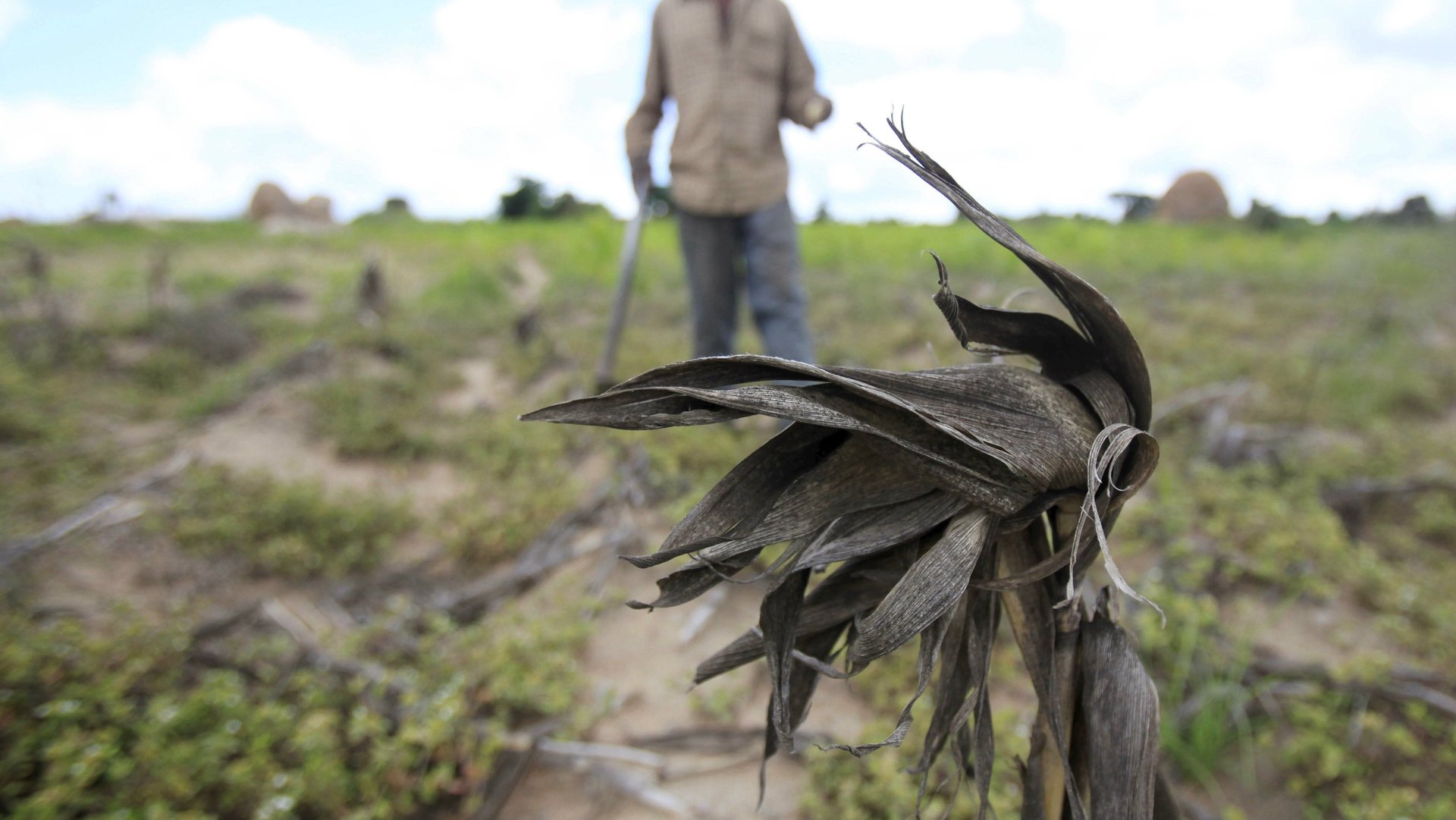The worst El Niño in years is triggering acute food shortages in Zimbabwe
Zimbabwe has declared a state of disaster in parts of the country which have been badly hit by one of the worst droughts it has seen in recent years. According to reports, as many as 2.4 million people—almost a quarter of Zimbabwe’s population—are in need of food aid as the drought has adversely affected crop supplies.


Zimbabwe has declared a state of disaster in parts of the country which have been badly hit by one of the worst droughts it has seen in recent years. According to reports, as many as 2.4 million people—almost a quarter of Zimbabwe’s population—are in need of food aid as the drought has adversely affected crop supplies.
Like much of southern Africa, droughts in Zimbabwe have been made even worse by the most extreme El Niño impact in 75 years. The phenomenon, a result of climate cycles in the Pacific Ocean which impact global weather patterns, has left most of southern Africa without rains since late last year. This year, Zimbabwe’s food shortage could be twice as bad as it was last year according to Prisca Mupfumira, the country’s social welfare minister. “From the indications so far, the amount of food aid may double or even treble since our last food assessment,” she said.
Zimbabwe’s declaration of a state of disaster is expected to trigger donations to assuage a pressing situation which Eddie Rowe, country director of UN’s World Food Programme , has described as ‘deteriorating at an alarming rate’. To make up for the shortages, Emmerson Mnangagwa, Zimbabwe vice president, says the government will spend $200 million on food imports. A bulk of that amount will be spent on buying corn form neighboring Zambia
The effects of the drought, made worse by El Niño, are multiple. While agricultural yields, mostly staple crops, have been critically affected, the drought are also taking a toll on livestock. Farmers say the parched pastures due to the lack of rain mean they cannot feed their livestock. To avoid a total loss from death to their cattle, farmers are forced to sell them at less than half of their actual value. The droughts could also affect hydro-power generation which currently provides 38% of Zimbabwe’s total electricity.
Across southern Africa, similar scenarios, differing in severity, could play out. Estimates suggest as many as 2.8 million people in Malawi may be exposed to famine. In total, the United Nations World Food Programme has pegged the number of people who could face food shortage in southern Africa at 14 million.